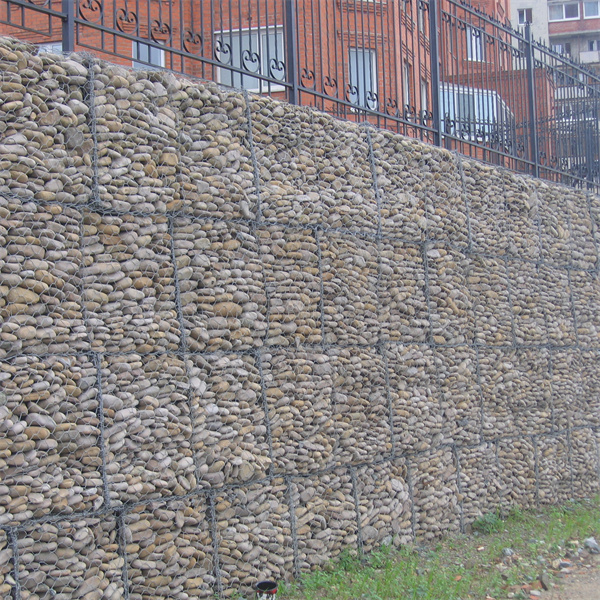Dec . 19, 2024 20:02 Back to list
gabion retaining wall prices
Understanding Gabion Retaining Wall Prices
When considering various methods for soil retention and erosion control, gabion retaining walls have gained popularity due to their effective functionality and aesthetic appeal. Made from wire mesh cages filled with rocks, these walls not only serve structural purposes but also enhance the landscape design. However, one important aspect to consider when planning installation is the cost associated with gabion retaining walls. In this article, we will explore the factors influencing gabion retaining wall prices and provide a deeper understanding of the overall investment.
What are Gabion Retaining Walls?
Gabion retaining walls are structures composed of stacked wire mesh baskets filled with stones, gravel, or other materials. They function by providing lateral support to soil and preventing erosion, particularly in steep slopes. Unlike traditional concrete walls, gabion walls blend seamlessly with natural landscapes. They are often used in landscaping, civil engineering, and road construction.
Factors Affecting Prices
1. Materials The primary cost driver for gabion retaining walls is the materials used. Gabion baskets made from galvanized steel or stainless steel are more expensive than those made from plastic-coated wire. Similarly, the type and quality of fill material—such as natural stone, recycled concrete, or gravel—can significantly influence the total cost.
2. Wall Size The dimensions of the wall directly correlate with the overall price. Taller and longer walls require more materials, hence more financial investment. Additionally, thicker walls, which may be preferred for enhanced stability and durability, come with a heftier price tag.
3. Labor Costs Installation costs depend on the complexity of the terrain and the expertise required. Labor costs can vary by region, with urban areas typically having higher rates. If the site requires excavation, grading, or preparation work, the overall labor costs will increase accordingly.
4. Design Features Custom designs—including decorative gabion walls with varied stone sizes and colors—can drive up costs as they involve more planning and skilled labor. Incorporating lighting or other landscape features also adds to the expense.
gabion retaining wall prices

5. Location and Accessibility The location of the site can affect pricing. Remote or hard-to-access areas may incur additional transportation and logistical costs for materials and labor. Moreover, local regulations and permits can also play a role in the pricing.
6. Maintenance and Longevity Gabion walls are generally low maintenance and durable, but initial costs may include estimates for long-term maintenance. The selection of quality materials will influence how often repairs may be required.
Cost Estimates
On average, the cost of gabion retaining walls can range from $15 to $50 per square foot, depending on the outlined factors. For example, a small wall measuring 20 feet in length and 4 feet high may cost between $1,200 and $4,000. Larger walls can significantly increase in price, especially when unique design elements are incorporated.
Comparing Costs Gabion vs. Traditional Walls
When comparing gabion retaining walls to traditional concrete or block retaining walls, costs can vary significantly. Traditional walls might have lower upfront costs but often incur higher maintenance and repair expenses over time. Gabion walls, while potentially more costly initially, provide a more eco-friendly solution that can prevent erosion better due to their drainage capabilities.
Conclusion
In summary, evaluating gabion retaining wall prices involves a multifaceted approach considering materials, labor, site conditions, and design preferences. While the initial costs may seem high compared to other solutions, gabion walls offer durability, aesthetic appeal, and sustainability. For homeowners and contractors, understanding these pricing factors is essential for making an informed decision about this effective and attractive land retention solution. Before proceeding with installation, it’s advisable to consult with professionals to gain accurate quotes and ensure a successful project outcome.
-
HESCO Gabion Baskets for Coastal Erosion Prevention
NewsAug.22,2025
-
Longevity and Durability of River Rock Gabion Walls
NewsAug.22,2025
-
How to Integrate Gabion 3D Walls in Urban Planning
NewsAug.22,2025
-
Reno Mattress Gabion Applications in Civil Engineering
NewsAug.22,2025
-
How to Install Wire Mesh for Gabion Baskets Properly
NewsAug.22,2025
-
Best Materials for Filling a Chain Link Gabion
NewsAug.22,2025
-
Wire Mesh Thickness Impact on Gabion Wall Load Bearing
NewsAug.12,2025






